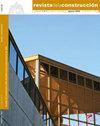Experimental investigation on mechanical properties of HSSCC containing waste steel fibers obtained from end-of-life tires
IF 1.4
4区 工程技术
引用次数: 0
Abstract
In this study, use of end-of-life tires (ELTs) in self-consolidating concretes (SCC), which enable higher rates of fiber use than conventional concrete due to its superior flow properties, for the elimination of the environmental negative impacts and recycling of them were aimed. Besides, it is aimed to investigate the behavior of waste steel wires with different aspect ratio obtained from different types of tires, contrary to what is mostly researched in the literature. Therefore, bead, cord and base wires, obtained from tires, were used in high-strength self-consolidating concrete (HSSCC) production as fiber reinforcement. Fresh and hardened state properties of the waste wire-reinforced (1-2-3%) samples of different sizes that were produced, were compared with industrial steel-reinforced and non-fibrous samples. In this regard, slump flow and T50 durations were determined, compression and bending tests were performed. Significant improvements in the mechanical properties of conventional concretes were observed with the use of waste wire. Using the optimum ratio of waste wire, an increase of approximately 102% in flexural strength and 14% in compressive strength was observed compared to the reference specimen. Aspect ratio was recognized as one of the most effective factor on optimum fiber content. Moreover, experimental results were analyzed with "paired sample t-test", and it was seen that there were no considerable differences in the mechanical properties of the samples in which industrial fiber and waste-wire had been used. Besides, cost analysis was carried out to assess the economic benefits of the use of waste tire wires in the concrete industry.含废旧轮胎废钢纤维的HSSCC力学性能试验研究
在本研究中,在自固结混凝土(SCC)中使用报废轮胎(elt),由于其优越的流动性能,可以比传统混凝土使用更高的纤维使用率,以消除对环境的负面影响并回收利用它们。此外,与文献研究的主要内容相反,本文旨在研究从不同类型轮胎中获得的不同宽高比废钢丝的性能。因此,从轮胎中获得的钢丝头、帘子线和基线被用作高强度自固结混凝土(HSSCC)生产中的纤维增强材料。对所制备的不同尺寸废钢丝增强(1-2-3 -3%)试样的新鲜和硬化状态性能与工业钢增强和非纤维试样进行了比较。为此,确定了坍落度流动和T50持续时间,并进行了压缩和弯曲试验。废电线的使用显著改善了传统混凝土的力学性能。采用最佳废丝配比,与参考试样相比,试件的抗折强度提高约102%,抗压强度提高约14%。长径比是影响纤维含量的最有效因素之一。此外,对实验结果进行“配对样本t检验”分析,发现使用工业纤维和废电线的样品的力学性能没有太大差异。并进行了成本分析,评价了废轮胎钢丝在混凝土行业的经济效益。
本文章由计算机程序翻译,如有差异,请以英文原文为准。
求助全文
约1分钟内获得全文
求助全文
来源期刊

Revista de la Construccion
工程技术-工程:土木
CiteScore
2.30
自引率
21.40%
发文量
0
期刊介绍:
The Journal of Construction is aimed at professionals, constructors, academics, researchers, companies, architects, engineers, and anyone who wishes to expand and update their knowledge about construction. We therefore invite all researchers, academics, and professionals to send their contributions for assessment and possible publication in this journal. The publications are free of publication charges.
OBJECTIVES
The objectives of the Journal of Construction are:
1. To disseminate new knowledge in all areas related to construction (Building, Civil Works, Materials, Business, Education, etc.).
2. To provide professionals in the area with material for discussion to refresh and update their knowledge.
3. To disseminate new applied technologies in construction nationally and internationally.
4. To provide national and foreign academics with an internationally endorsed medium in which to share their knowledge and debate the topics raised.
 求助内容:
求助内容: 应助结果提醒方式:
应助结果提醒方式:


